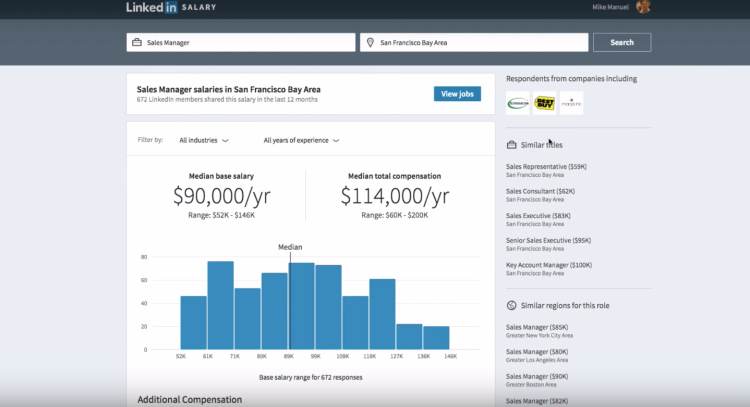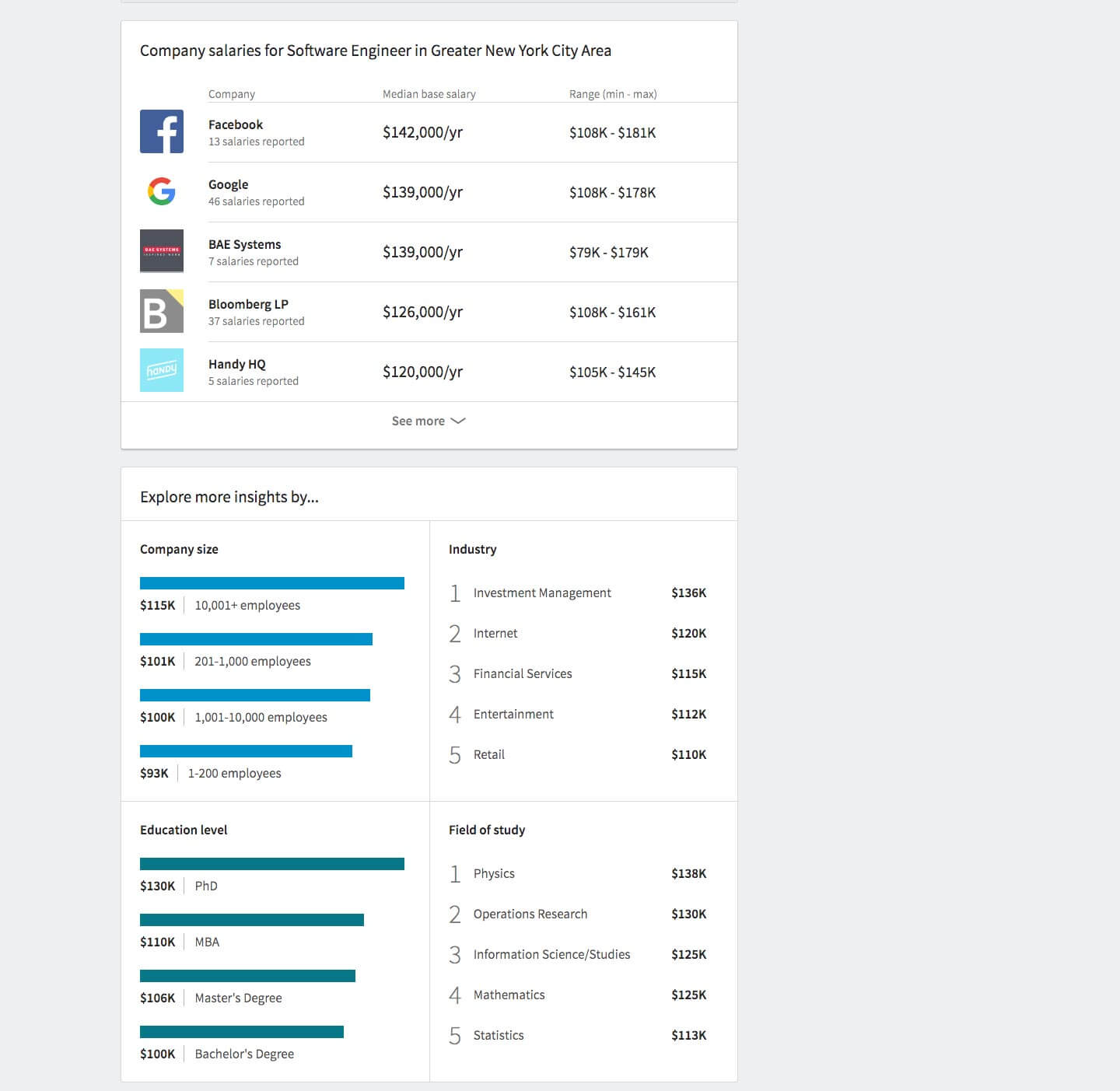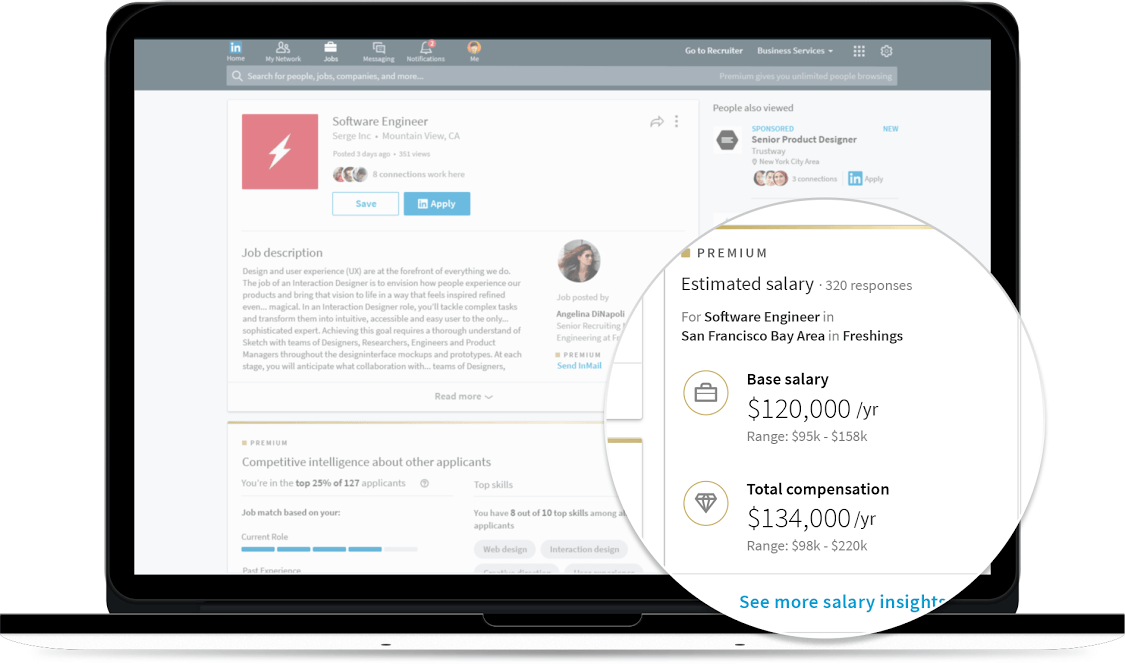Want smarter insights in your inbox? Sign up for our weekly newsletters to get only what matters to enterprise AI, data, and security leaders. Subscribe Now
After more than a decade helping reimagine the professional resume and how people network, LinkedIn has launched a tool designed to help you get more bang for your buck, so to speak. In doing so, LinkedIn Salary, as it’s called, directly competes with Glassdoor, Comparably, and other similar services.
LinkedIn is making its new tool available to all members in the U.S., Canada, and the U.K. starting today, with plans to roll it out more globally throughout the next year. It can only be accessed through the desktop or mobile web, but there’s always the possibility of incorporating it into the social network’s myriad apps down the road.
People looking for a new career or job opportunity may turn to LinkedIn because it’s a place that not only houses their digital resume, it also contains an extensive network of people to reach out to for assistance (thanks to the “six degrees of Kevin Bacon” effect). But while you may have the resources needed to get your foot in the door, what happens when discussions come up about how much you expect to make? This was a weaker area for LinkedIn because it didn’t have any tools to help its 467 million members research this type of information.
LinkedIn Salary aims to solve this problem. It operates on a “give and get”-type model, meaning that you’re limited to one page view until you contribute to the service. To do this, you simply provide salary information anonymously to LinkedIn, and you are then given unlimited access for one year.
Ryan Sandler, the product manager on the Careers team, stated that any data submitted is encrypted so LinkedIn’s team doesn’t know who provided the salary information. To date, more than 1 million members have contributed to this program, he said.
You can look up salaries based on title and location, like “reporter in San Francisco, California,” for example. The search results will display the number of members that have shared relevant information within the past 12 months — this is done because of the frequency with which people swap jobs. You’ll be able to filter further by industry and the number of years of experience you have.
Although salaries are provided in percentile ranges, LinkedIn believes its offering is more accurate than other services because it takes into account not only location, but also industries and job title. The company also has what it hopes is a dedicated user base contributing to its library of data, something that isn’t readily available to Glassdoor, Indeed, and many other services.
What’s more, Sandler explained that LinkedIn has done some work to eliminate duplication of titles and improve job title taxonomy. Because you might call yourself a Growth Hacker but another member described themselves as a Marketing Manager, LinkedIn uses a variety of machine learning signals, such as skills, work history, and others to standardize titles across the board.
It’s one thing to find out how much you might be worth, but LinkedIn hasn’t stopped there. It also shows you additional compensation details, such as what annual bonuses would be, restricted stock units (RSU), stock options, sign-on bonuses, and other factors that contribute to your total benefits package.
You’ll see related companies in your location, along with the median base salary and range of your desired position, all provided by members supplying the data anonymously. If you want to dive deeper into the data, LinkedIn Salary provides a breakdown by company size, industry, education level, field of study, and the top locations for someone in that position.
And because it’s LinkedIn, the professional social network can also show you any available positions that are listed on its platform.
This tool is beneficial for those who are actively seeking their next job opportunity, but it’s also useful for those who are still content with their position but are wondering about a raise or advancement. It’s quite possible that LinkedIn could release details about industry salary trends as they relate to equal pay, location, and other global impact issues.
LinkedIn Salary certainly fits in with the company’s strategy around its Economic Graph, which has been heavily championed by company chief executive Jeff Weiner. This is centered around helping members not only network, as they do on Facebook, but also improve their position in life, whether through finding jobs, joining groups of like-minded individuals, or connecting with other professionals. Over the past few years, the company has accelerated development of this service, including bringing in training opportunities with LinkedIn Learning and enabling job seeking opportunities for freelancers and independent contractors.
Being empowered with the salary data will help members stay informed and make wiser career decisions. And while LinkedIn Salary appears to be a standalone tool, it’s reasonable to assume that in some way, shape, or form, the company will bring all of this data together to enhance its advertising opportunities and job listings, as well as its company Pages, which recently received an update.





